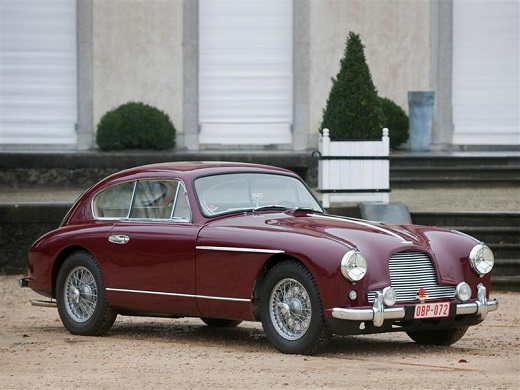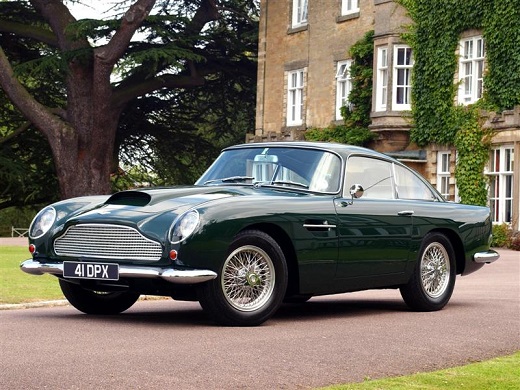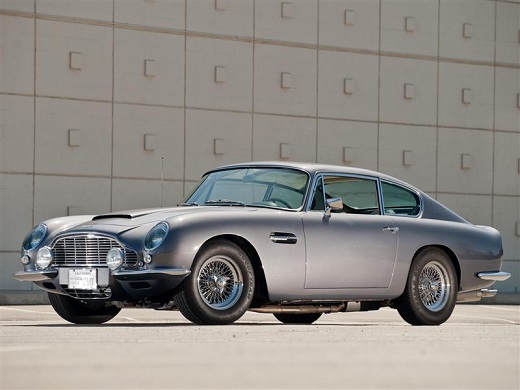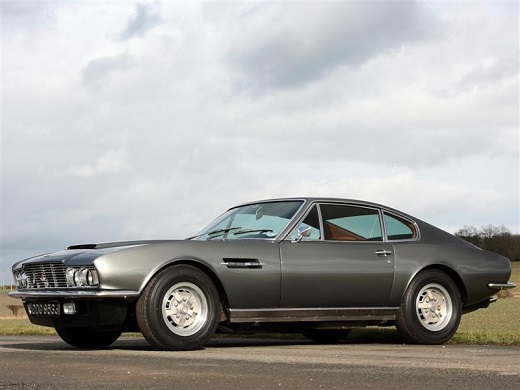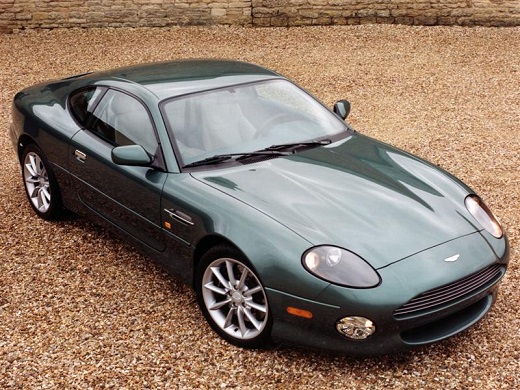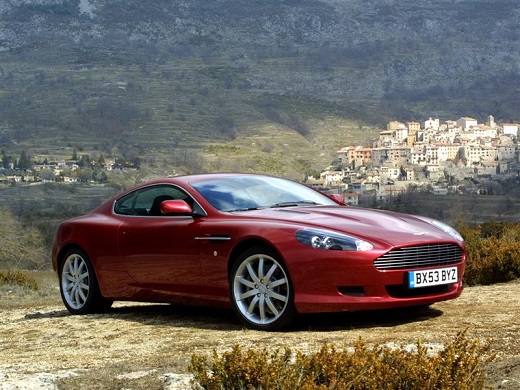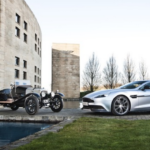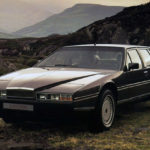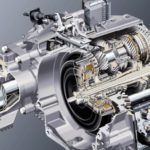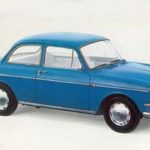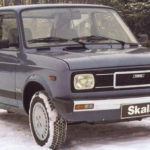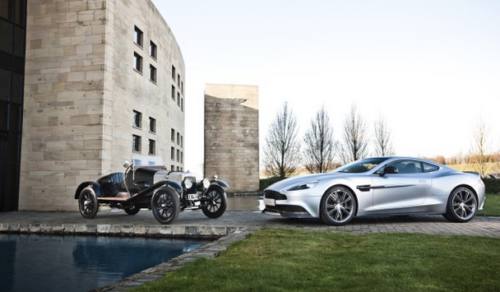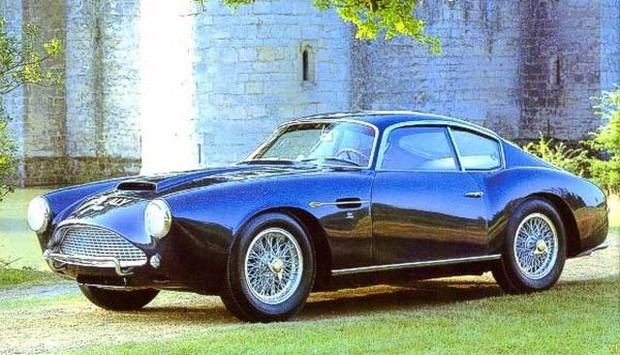Aston Martin DB - Model History
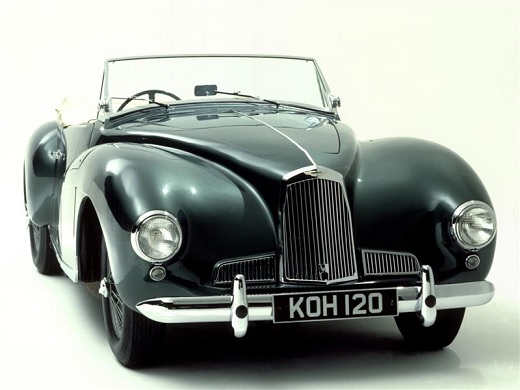
Aston Martin DB
It is best known in the world as the car of undercover British agent James Bond, but its history began much earlier.
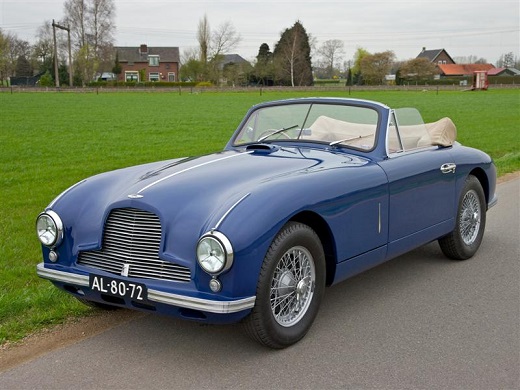
Aston Martin DB
Of course, this is the Aston Martin DB, one of the most famous cars in the British auto industry which, to this day, manages to keep this very famous gran turismo car alive. When founded by Aston Martin in 1913 (though it did not sell vehicles until 1921), by Lionel Martin and Robert Bumford, the goal was to produce elegant sports cars in limited numbers that would attract attention wherever they appeared. In the pre-war period, this was mostly about car sport, but the company was in the aftermath of the post-World War II financial crisis and Aston Martin changed owner in 1947 when British typhoon David Brown came to the fore. Brown immediately wanted a brand new line of vehicles that would have an elegance and sporty spirit that would bear his name. However, despite its legendary name, Brown concentrated more on the company’s second division, Lagonda, which was also purchased in 1947. Lagonda was also a legendary company that, in the 1930s, celebrated with V12 models and Brown was preparing a brand new sedan, with a 2.6L engine, for 1948.
This means that the first DB (David Brown) car, known as the DB1 and 2-Liter Sports, was made without much attention, but it was still one of the most beautiful cars of the 1940s. Calude Hill made the design, and under the hood of this two-seater would find a 2.0L I4 90hp engine. The official presentation followed at the 1948 London Motor Show where the car was well received by the audience. However, Aston Martin was still “suffering” from the effects of the war and the factories in London had not been modernized to produce expensive and exclusive cars. DB1 was also very expensive to manufacture, and when it added to the difficult economic situation in post-war Britain, probably Aston Martin himself was not surprised when only 15 vehicles were sold in the first two years. One of them managed to win the legendary Spa 24 Hour Race in 1948 with drivers Jock Horsefall and Leslie Johnson jumping the company rating. Although DB1 was named David Brown, it can only be concluded that DB2 was his first work.
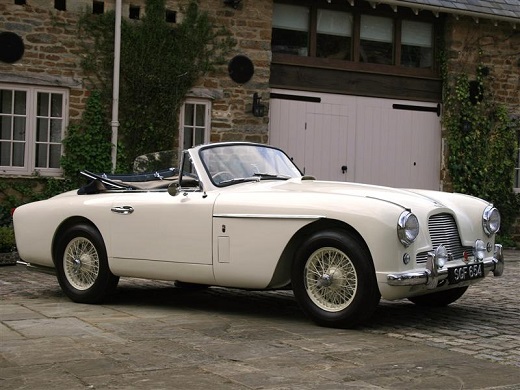
Aston Martin DB
In the late 1940s, Brown succeeded in stabilizing the company by merging Aston Martin and Lagonde into one factory and the two companies began to share platforms and mechanics. The best example of that sentence was the DB2 model, which began to perform less well before being introduced to the audience. Specifically, for the 1949 Le Mans 24 Hour Race, Aston Martin saved three DB2 prototypes, two of which had the famous I4 engine from DB1 while the rest had a 2.6L I6 engine from Lagonda. Although they did not record good results, next week at the Spa 24 Hours race, DB2 with the I6 engine finished third. The official introduction of the serial model followed at the 1950 New York Auto Show where audiences saw a modified DB1. Two cars were quite similar in profile, mechanical changes were major, and DB2 was powered by the aforementioned Lagondin 2.6L I6 engine, which developed 105 hp in the basic version and 125 hp in the sporty Vantage version. Thanks to the aluminum chassis, DB2 had solid performance for its period (acceleration to 100 km / h in 11.2 seconds, top speed 187 km / h), and sales were very satisfactory.
By 1954, 409 DB2 had been delivered to the audience, of which only 49 came as convertibles. In 1953, Aston Martin introduced a modified version with the DB2 / 4 mark. For the first time, the DB was available with four seats although the dimensions of the vehicles remained identical, so Aston Martin had to reduce the dimensions of the tank and the spare tire area. For an extra price, the buyer was able to contact companies such as HJ Mulliner and Sons of Birmingham, who had worked with Rolls Royce in the past, and get special rear seats that freed up more space. The buyer was again given a choice of coupe and convertible, but this car attracted the most attention with coupe with a new driver's car and roof. Under the hood, the standard engine was a 125hp Lagondin that promised acceleration to 100 km / h in 10.5 seconds and a top speed of 191 km / h. Aston Martin also introduced a more modern 2.9L 140hp engine which was the first DB with a top speed of more than 200 km / h and sales exploded.
In the five years of production, Aston Martin has delivered customers 764 DB2 / 4, some of which have been specially modified by renowned Italian companies such as Bertona and Carrozzeria Touring. The car market changed greatly during the 1950s, with Americans leading the way. For most European companies, the main market was still North America whose customers were used to a completely new design every year. Recognizing that DB2 / 4 was already in its fifth year of production without major changes, Aston Martin introduced a revamped model in 1957 under the DB Mark III designation. Similar to its predecessors, this car was faster, safer and nicer. For design inspiration, the British vehicle manufacturer used a racing DB3S car that, in the late 1950s, represented fear and trembling on the tracks. For the first time, the DB was also available with an automatic transmission while the engine power was increased to 162 hp and later to 195 hp. Most specimens came as 2 + 2 or convertible, but a small number (84) were also ordered as coupes.
The starting price of $ 7,450 began to enter Ferrari territory, which also played a big part in the sale. DB Mark III has survived the market for only three years with 551 vehicles manufactured. The first brand new DB was introduced to the public in 1958 and to this day represents one of the most beautiful cars in Aston Martin history. David Brown wanted a brand new car that engineer John Wyer had worked on for three years. Although the DB4 was shorter than its predecessor, it was also wider, opening up the rear seats - something Aston Martin has been heavily criticized for in the past. The design was made by Carrozzeria Touring from Milan, which the audience received with enthusiasm at the 1958 London Motor Show. This Italian house made an aluminum car, giving it a weight of just 1,400 kg. Under the hood was a brand new 3.7L I6 240hp engine that gave the car acceleration to 100 km / h in just 9.3 seconds and a top speed of up to 224 km / h. Sales started very satisfactorily. In 1959, Aston Martin added a DB4 convertible to the line, while Italian specialist Zagato introduced its version with 302 hp and a top speed of up to 246 km / h.
This car also had a very impressive racing history with winning the 1959 Le Mans 24 Hour Race. The DB4 was by this time the most successful Aston Martin ever produced with 1,210 units sold in six years while Zagato added 100 more. The next in line was the DB5 which, although survived only two years and produced 1,021 units, is safe today the most famous Aston Martin ever produced. The DB5 shared most of the mechanics with the DB4 except the engine, which housed a new 4.0L engine with 285 hp in the basic version and 325 hp in the sporty Vantage version. From the design side, the car did not revolutionize, but has been improved to such an extent that customers think the new car is at stake. Although the DB5 was mostly a coupe and convertible, British specialist Harold Radford also produced one wagon. This car was made in 1965 and today is the rarest DB ever produced. Despite all the praise, the DB5 had some criticisms.
First of all, the weight of the vehicle was increased to a large 1,485 kg, and buyers began to find that the $ 8,000 car had no air conditioning or power steering. As mentioned earlier, the DB5 is certainly the most famous Aston Martin today thanks to its small screens. Namely, in 1964 James Bond's movie "Goldfinger" arrives in cinemas, which is now considered one of the best films about the British secret agent, and the movie's hero was driven by DB5. This car later appeared on several more James Bond films and is still worth a fortune to this day. The replacement for the DB5 was the DB6, which did not differ significantly, but was more aerodynamic and able to reach a top speed of 250 km / h. In 1967, Aston Martin presents DBS, the first brand new car in 18 years, to the public. Development on this car began in 1966, again at the behest of David Brown, but has progressed slowly since its inception.
One of the reasons was the bankruptcy of Carrozzeria Touring, which made Aston Martin lose its design partner, and the economic crisis in Europe played a major role in causing many buyers to turn to smaller cars. The new designer, young William Towns, has been tasked with designing not only the new Aston Martin coupe but also the Lagonda sedan. Towns designed the two cars very similarly, and despite the all-new design, the DBS wasn't as new as Aston Martin wanted customers to believe. The engine was thus completely taken over by the DB6, and it was still a 4.0L I6 engine with 283 hp. Despite weighing as much as 200 kg, the performance was impressive, with acceleration up to 100 km / h in 8.5 seconds and a top speed of 240 km / h. For 1969, Aston Martin adds to the line the first V8 engine, size 5.3L, with 315 hp. Thanks to the engine, acceleration to 100 km / h was 5.9 seconds, while the top speed was 257 km / h. And DBS gained fame on the small screens thanks to the latest James Bond movie "On Her Majesty's Secret Service" and also had a short role in "Diamonds Are Forever".
While the DBS V8 survived until 1989, the rest of the DBS line was officially shut down in 1972. That year, David Brown sold Aston Martin and Lagonda to Company Development, Ltd, which marked the end of these cars until 1994. That year, the audience was introduced to the modern DB7, which represented the basic and cheapest model of the company. The premiere of this car was at the Geneva Motor Show in 1992, and sales began a little later. At its start, the only engine as an option was the 3.2L I6 with 335 hp, while later a 6.0L V12 engine with 420 hp was added to the line. Thanks to it, the DB7 was able to accelerate to 100 km / h in just 4.9 seconds and deliver a top speed of 300 km / h. Unlike its predecessors, the DB7 was designed by British designers and enjoyed great popularity (over 11 copies sold over 7,000 years). The latest DB car bears the DB9 designation and went on sale in 2004. For the first time in history DB is only available with the V12 engine, the famous 6.0L, which develops 469 hp. This is also the fastest DB ever produced with acceleration of up to 100 km / h in just 4.6 seconds. There are several reasons why Aston Martin decided to bypass the DB8 tag.
Some argue that the British carmaker feared buyers would think the number eight indicates the number of cylinders while there were, and those who say the DB9 was such a revolution that Aston Martin wanted to show it with a new and larger number and compared to its predecessor. Whatever the reason, DB9 is enjoying great success today, with notable results being achieved in motor sport with wins at the American Le Mans, Le Mans and FIA GT Championships. After many years of financial problems, Aston Martin finally recovered under the leadership of American Ford and Indian Dad, and today is the ideal sports car manufacturer. Due to small production numbers, DB is one of the most expensive classics today, with prices exceeding $ 100,000 / euro. One of the most valuable specimens is the 1965 DB5 used in James Bond films which, in 2010, sold for a record £ 2.6 million. The audience will have the opportunity to see this car again in the latest Bond movie "Skyfall", which is expected to premiere by the end of the year.
Author: Talladega
Images: Aston Martin
Retrieved from: www.brzabrzina.com
Recommendation of similar texts:

Hi there, I am Mladen and I am an auto enthusiast. I started this blog years ago to help like minded people share information about latest cars, car servicing ideas, used car info, exotic cars, and auto technology. You will find helpful articles and videos on a wide variety of cars - Audi, Mercedes, Toyota, Porsche, Volvo, BMW and much more. Ping us if you have anything cool to share on latest cars or on how to make older cars more efficient, or just want to say hi!

